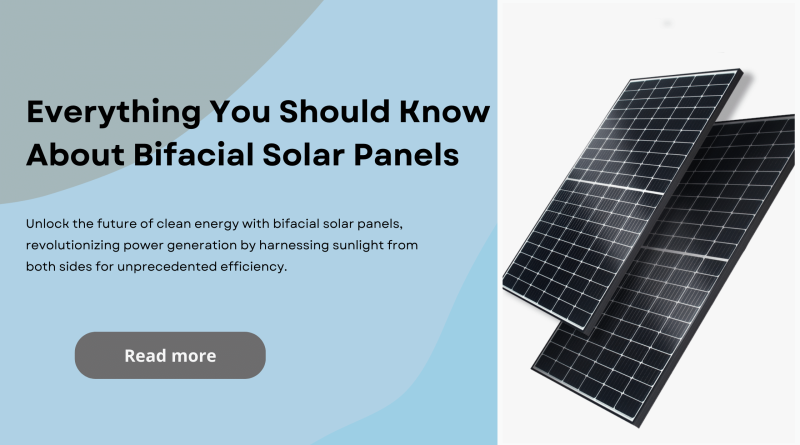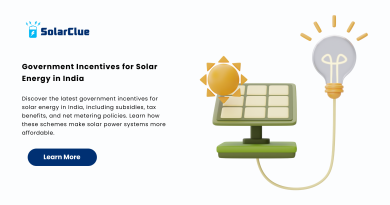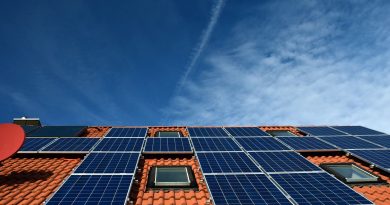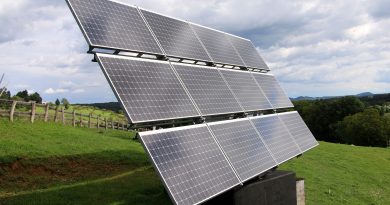Everything You Should Know About Bifacial Solar Panels
Advances in renewable energy technology have revolutionized the way we generate electricity. With solar power gaining momentum as a clean and sustainable energy source, researchers and engineers have been tirelessly working to improve solar panel efficiency. One of the most promising breakthroughs in the solar industry is the development of bifacial solar panels. In this blog, we will delve into the working principle, benefits, and potential applications of bifacial panels.
Table of Contents
Understanding Bifacial Panels
As their name suggests, generate electricity from both sides of the panel. Unlike traditional solar panels that absorb sunlight only through the front surface, these panels can harness solar energy from both the front and rear sides, significantly increasing their energy output. The design allows sunlight to penetrate the front surface and bounce off a reflective backing, optimizing overall energy production.
The transparent rear side cover of these panels stands out as a key design feature, ensuring effective capture of sunlight reaching the underside. This innovative approach enables them to actively tap into additional sunlight that conventional solar panels would otherwise waste. By maximizing the absorption of sunlight, these panels provide a great solution to optimize energy production and enhance overall system performance.
Advantages of Bifacial Panels
It offer several advantages over traditional, monofacial panels. Here are some key benefits that make a compelling choice:
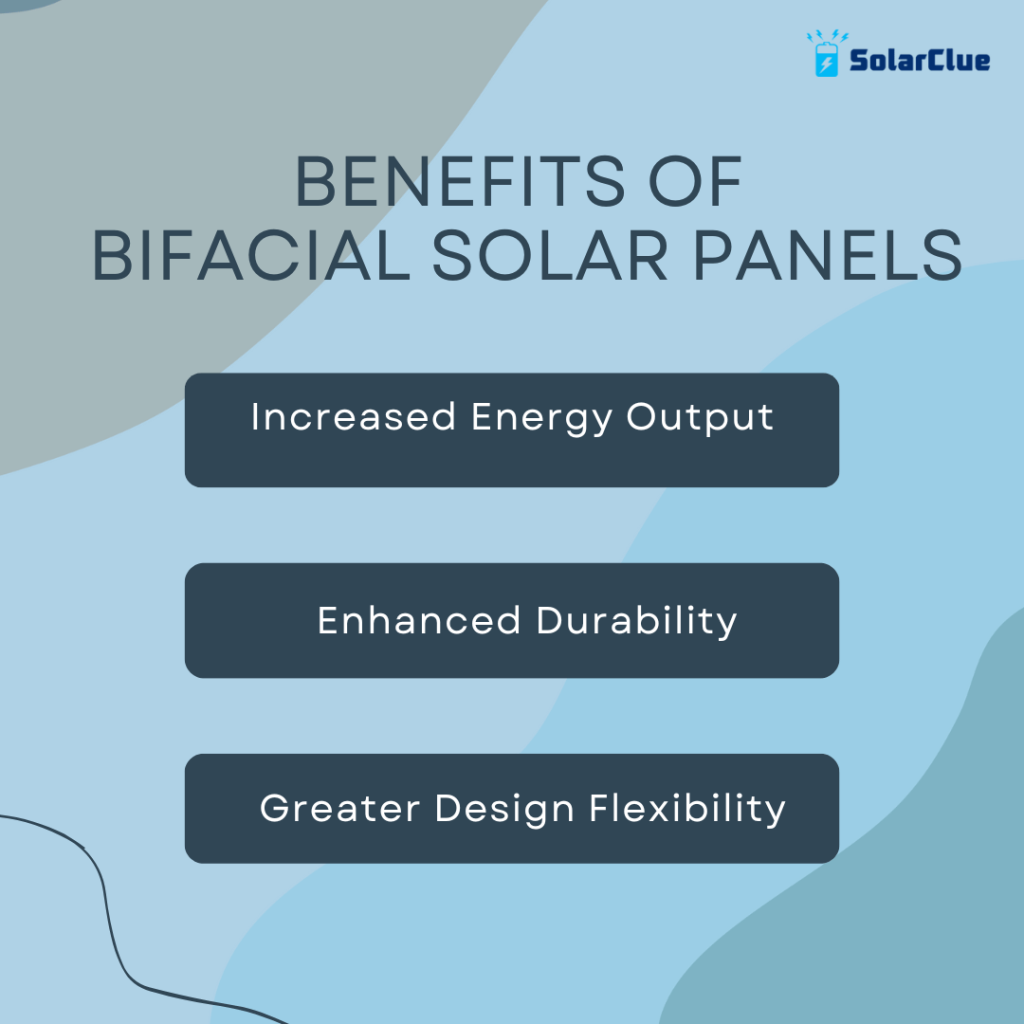
Increased Energy Output
By capturing sunlight from both sides, it can yield up to 30% more energy compared to traditional panels.This implies that bifacial panels can generate more electricity with the same amount of space, making them ideal for projects with limited installation areas.
Enhanced Durability
Designed to withstand harsh environmental conditions, such as extreme temperatures and high humidity, as this panels ensure durability and reliability in challenging settings. Their robust construction and durable materials ensure long-term performance, resulting in a longer lifespan compared to standard solar panels.
Greater Design Flexibility
The versatility of this panels allows for various installation options. Mount them on the ground, integrate them into building facade systems, or use them as shade structures. This flexibility enables the panels to adapt to different environments and applications, making them suitable for both residential and commercial projects.
Potential Applications of Bifacial Panels
The multifaceted advantages of this panels make them highly suitable for a range of applications. Explore how bifacial panels can fully harness their benefits in the following potential use cases:
Ground-Mounted Solar Arrays
When installed in utility-scale ground-mounted installations, bifacial panels can significantly increase energy output. By optimizing space utilization and generating more electricity, they offer an efficient solution for large-scale solar parks and farms.
Solar Rooftops
Residential and commercial buildings can leverage the benefits of bifacial panels by integrating them into rooftops. This enables these buildings to generate clean electricity while optimizing the available roof space. Additionally, the increased energy production can also offset the building’s energy consumption, reducing reliance on the grid.
Creative Solar Structures
This Panels have opened up new avenues for artistic and architectural applications. From solar carports and shading structures to building-integrated photovoltaics, the possibilities are vast. Their transparent rear side allows for creative designs, transforming solar panels into visually appealing elements while harnessing the power of the sun.
Conclusion
Ready to revolutionize your energy game? Make the smart choice with Solarclue®. Experience up to 30% more energy output, enhanced durability, and unmatched design flexibility. Don’t miss out on the future of clean energy – take the first step towards a brighter tomorrow! Click here to explore our Bifacial Solar Solutions and power up your sustainable journey. Explore Now!
Frequently Asked Questions
Bifacial solar panels are a type of photovoltaic module designed to capture sunlight on both the front and rear sides, enhancing energy generation by utilizing reflected sunlight from surrounding surfaces.
Bifacial panels generate electricity not only from direct sunlight but also from light reflected off surfaces like the ground or nearby structures. The rear side of the panel captures and converts this reflected light into additional energy.
Bifacial panels offer increased energy yield, better performance in diffuse light conditions, and improved overall efficiency compared to traditional solar panels. They also have the potential for cost savings per watt of electricity generated.
Bifacial panels perform well in environments with reflective surfaces, such as snowy areas, desert landscapes, or near water bodies. However, their effectiveness may be limited in densely shaded or enclosed spaces.
Bifacial solar panels generally have a similar lifespan to traditional solar panels, ranging from 25 to 30 years. Proper maintenance and installation practices can contribute to their longevity.
Optimal installation involves positioning the panels to maximize exposure to direct sunlight and take advantage of reflected light. Factors such as tilt angle, spacing, and ground cover should be considered for the best performance.
While bifacial panels are commonly used in utility-scale projects, they can also be suitable for certain residential applications, particularly in areas with ample sunlight and reflective surfaces.
Bifacial panels can generally use standard inverters. However, some inverters are specifically designed to maximize the performance of bifacial modules, and it’s advisable to consult with manufacturers for compatibility recommendations.
Challenges may include optimizing the tilt angle and spacing to fully exploit the bifacial advantage. Additionally, the impact of nearby structures or vegetation on light reflection should be considered during the planning phase.
Yes, ongoing research aims to further improve the efficiency, durability, and cost-effectiveness of bifacial solar panels. Innovations may include advanced materials, design enhancements, and optimization of installation practices.

